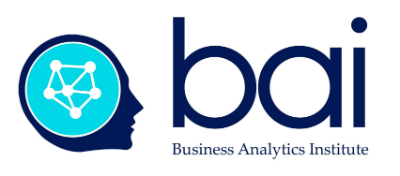Data isn't just data
Part of this story we have heard before. Data is everywhere – we have produced more data in the last two years than in the history of mankind [1]. Data is the lifeblood of the Fourth Industrial Revolution – advances in internet technologies and business analytics will be the new foundations of sustainable competitive advantage [2]. Digital strategies are no longer designed around websites, but in digital platforms designed to capture consumer actions, preferences and motivations. This said, data remains nothing more than imperfect representations of the business realities around us. What do we mean by making a better use of data?
Most data isn’t found in a database – specialists estimate that 80 to 85 percent of customer data come from “non-structured conversations” in audio, textual or video form[3]. Moreover, most data isn’t (yet) accessible through our computers, for data is all around us in the sights, sounds, emotions and ambitions of our managers, customers and teams. Data isn’t readily comparable: quantitative, qualitative, ordinal and ratio values have very little in common. People don’t view the data the same way, for our cognitive filters weigh the numbers and qualities based on our prior experience. Little wonder that in spite of continuous advances in information technology, the gap between the facts and the figures hasn’t disappeared.
If data is everywhere, what’s the point? Business analytics is about using data to solve problems: customer challenges, organizational opportunities , and societal problems. Data in itself has no value, the value is in learning to use the data to understand the nature of the problems we face (simple, complex, deterministic, stochastic…) and to identify the corresponding good, better and/or memorable decisions. Not all organizations use data in the same way, certain organizational cultures use the data to confirm (or infirm) their strategies, others build their strategies from a constant examination of the data at hand. The primary challenge in both cases isn’t to produce the data, but to understand how to data nourishes corporate strategy.
Big Data is not synonymous with business analytics. The current feeding frenzy around “Big Data” may spur unwise investments in technology and training in tackling complex social or economic problems poorly aligned with most corporate budgets and timeframes. These investments might well be more profitably spent on “Little Data” – the wealth of data collected by IoT technologies on individual choices and preferences. Douglas Hubbard has argued convincingly that we can substantially improve managerial decision making with as few as five data points[4]. In all cases, the critical success factor for managers is to “own” the data – to understand its quality and pertinence in the context of their own work. Value in the Digital Age doesn’t come from the data, but from learning how to transform the data into impactful decisions.
The practice of business analytics is heart and soul of the Business Analytics Institute. In our Summer School in Bayonne, as well as in our Master Classes in Europe, we put analytics to work for you and for your organization. The Institute focused on five applications of of data science for managers: : working in the digital age, managerial decision making, machine learning, community management, and visual communications. Data-driven decision making can make difference in your future work and career.
______________
[1] Marr. B. (2015). Big Data : 20 Mind-boggling Facts that Everyone Should Read, Forbes. Available at : https://www.forbes.com/sites/bernardmarr/2015/09/30/big-data-20-mind-boggling-facts-everyone-must-read [Accessed 2 Mar. 2017].
[2] Schwab, K. (2017). The Fourth Industrial Revolution. 1st ed. Random House Inc.
[3] Grimes, S. (2008). Unstructured data and the 80 percent rule, August 1, 2008, https://breakthroughanalysis.com/2008/08/01/unstructured-data-and-the-80-percent-rule/[Accessed 22 Apr. 2017].
[4] Hubbard, Douglas W and Dave Drummond. How To Measure Anything. [Old Saybrook, Ct.]: Tantor Media, Inc., 2011


